Russia-Ukraine war underscores the importance of standoff missiles to degrade the enemy
Smruti Deshpande
Russia’s offensive in Ukraine, which has now entered its ninth month, has been dominated by the use of standoff weapons in a major manner. Russia has made extensive use of air, missile and artillery bombardments on Ukrainian cities and military facilities. A form of non-contact warfare, standoff missiles have been used extensively from the beginning of the war in February 2022. Russia has used several precision standoff missiles to hit key targets in Ukraine. In retaliation, Ukraine too has been gathering similar weaponry from the West.
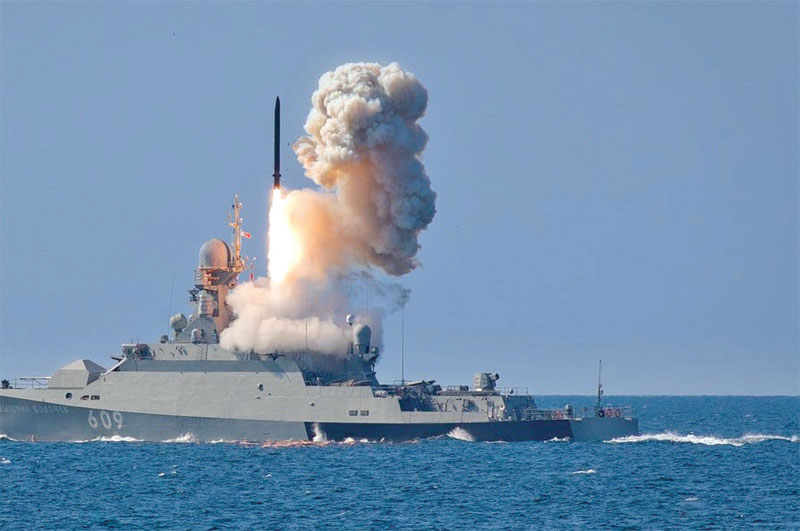
On the first day of the war, according to the US, Russia fired roughly 100 missiles from land and sea. This included rockets, short and medium-range ballistic missiles, cruise missiles and surface-to-air missiles. Among the weapons that Russia used were the subsonic 3M14 Kalibr (NATO has termed it as the SS-N-30A), which has a 450-kg payload and a range of 1,500-2,500 kms. Another missile, Iskander, a short-range ballistic missile, was also used by Russia. It has a range of 300-400 kms. Apart from these, Tochka, developed during the Cold War, was employed. It is a short-range ballistic missile and can carry conventional, nuclear or chemical warheads. The missile’s maximum range of fire is 70 kms.
According to reports, Russia had employed the Tochka armed with a 9N123K submunition warhead. The KH-31P, a supersonic anti-radiation missile with a standoff range, was used by Russia to knock out radar sites, according to The Warzone. Reuters reported that on October 10 these missiles tore into intersections, parks and tourist sites in the capital Kyiv. “The barrage of dozens of cruise missiles fired from air, land and sea was the biggest wave of air strikes to hit away from the front line, at least since the initial volleys on the war’s first day, February 24,” it said.
These missiles, launched from land, sea and air targeted command and control facilities, air defence sites, air bases, facilities in the Black Sea port city of Odesa among other important targets. The novelty factor in this is that Russia, in the recent past, was not known to be using precision-guided missiles extensively, unlike the US.
United States
The US established this way of fighting wars during Operation Desert Storm. The war was the first combat test of the cruise missile system. It also marked the first coordinated Tomahawk and manned-aircraft strike in history.
According to the US’ Public Broadcasting Service (PBS) Frontline, “Within the first few minutes of Operation Desert Storm, Tomahawk missiles launched from the battleships Missouri and Wisconsin struck with accuracy at Iraqi command centers, and radar installations.” In the war, Tomahawks were used to destroy surface-to-air missile sites, command and control centres, electrical power facilities and were “credited with the destruction of Iraq’s presidential palace.” After the war, the US’ major emphasis lay on increasing the standoff range of the air-delivered munitions and improving their accuracy and lethality.
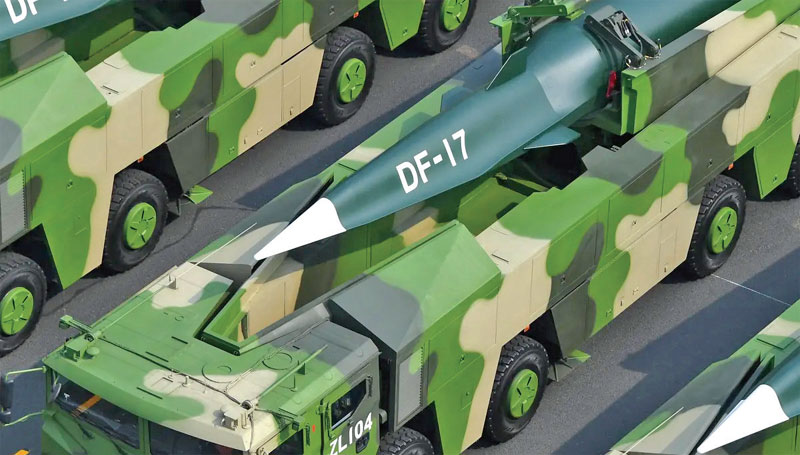
Missiles with standoff ranges include ballistic missiles, cruise missiles and glide bombs. The significance of such weapon systems is that they can be launched from a distance of up to hundreds and thousands of kilometres.
Ukraine has asked the US for its Army Tactical Missile Systems (ATACMS), which the US refused as the Guided Multiple Launch Rocket Systems (GMLRS) that they have sent by the thousands (as per The New York Times) to Ukraine are sufficient to hit their targets even in Crimea. The long-range missile, ATACMS can strike up to 190 miles (300 kms), with the warhead carrying 375 pounds of explosives.
The ATACMS is the US Army’s oldest surface-launched missile in service. It was developed in the 1980s against the Soviet Union. This weapon has been fired by the US during Operation Desert Storm to strike Iraq’s medium-range ballistic missile launchers and surface-to-air missile sites. It is because of the range of this missile that Ukraine wants to procure this missile. As The New York Times puts it, “Compared to the GMLRS, the version of the ATACMS that Ukraine wants carries an explosive warhead that is about 50 per cent larger and can strike targets more than three times as far.” The US daily reported that a prototype of its replacement is being test-fired in New Mexico. “That weapon, called the Precision Strike Missile, will fly to ranges previously barred by the Intermediate-Range Nuclear Forces Treaty,” the report stated.
This goes to show how Russia and the US are investing in building more missiles of longer standoff ranges. The US, in fact, is advocating the use of long-range missiles in the Indo-Pacific for countries such as Japan and Australia, to safeguard the region against China. In an interview to Nikkei Asia, the US Commander of the Marine Corps Forces Pacific, Lt Gen. Steven Rudder Rudder stated that long-range strike capabilities are crucial for the US and Japan to deter hostile military activities in the Western Pacific. Lt Gen. Rudder said the use of US land-based naval strike missiles, acting in concert with Japanese-made Type 12 surface-to-ship cruise missile units, “allows us to conduct sea denial operations.”
Japan’s surface-to-ship missiles currently have a range of over 100 kms, but there are plans to extend this distance beyond 1,000 kms, putting coastal areas of China and North Korea in reach. Nikkei Asia said Washington was believed to be in talks with Tokyo over deploying an anti-ship missile unit, aiming to place it in Japan by around 2027. This comes in the backdrop of the PLA firing five ballistic missiles that landed inside Japan’s exclusive economic zone as a part of simulating a blockade of Taiwan in the Taiwan Strait. Lt Gen. Rudder’s comments came a day after Japan announced that it would start producing longer-range missiles and research hypersonic missile systems to combat escalating regional tensions.
In July, the US State Department approved a USD 23 million sale of 80 Joint Air-to-surface Standoff Missile-Extended Range (JASSM-ER) missiles to Australia. The stealth cruise missiles have a 935 kms range and can be deployed from the Royal Australian Air Force’s (RAAF) F-35 Lightning II or F/A-18F Super Hornet fighters.
The US has upped its game when it comes to standoff missiles. CNN, quoting a defence official, reported that the US successfully tested a hypersonic missile in mid-March but kept it quiet for two weeks to avoid escalating tensions with Russia as President Joe Biden was about to travel to Europe. In a first test of the Lockheed Martin version of the system, the Hypersonic Air-breathing Weapon Concept (HAWC) was launched from a B-52 bomber off the west coast. The country is far behind China and Russia in developing, testing and fielding hypersonic weapons.
Most recently in October, the US test launched a rocket for the development of hypersonic weapons. The rocket carried 11 experiments to test and gather information for hypersonic weapons. The country has prioritised development of hypersonic missiles after China’s tests and Russia usage of hypersonic missiles in its invasion of Ukraine.
Apart from this, the race for hypersonic missiles is growing by the day. Russia unveiled a weapon called the Kinzhal in 2017 and a hypersonic boost-glide vehicle, the Avangard, in 2019. China paraded a rocket-boosted hypersonic glide vehicle (HGV), the Dongfeng-17, in a recent military parade. Foreign Policy reported that the Pentagon’s fiscal year 2023 budget request asks for USD 4.7 billion for research on hypersonic weapons, a boost from USD 3.8 billion in fiscal year 2022. According to Science, “Australia is collaborating with the United States on a Mach 8 HGV, and India with Russia on a Mach 7 HCM. France intends to field an HCM by 2022, and Japan is aiming for an HGV in 2026, the US Congressional Research Service noted in a July 2019 report.”
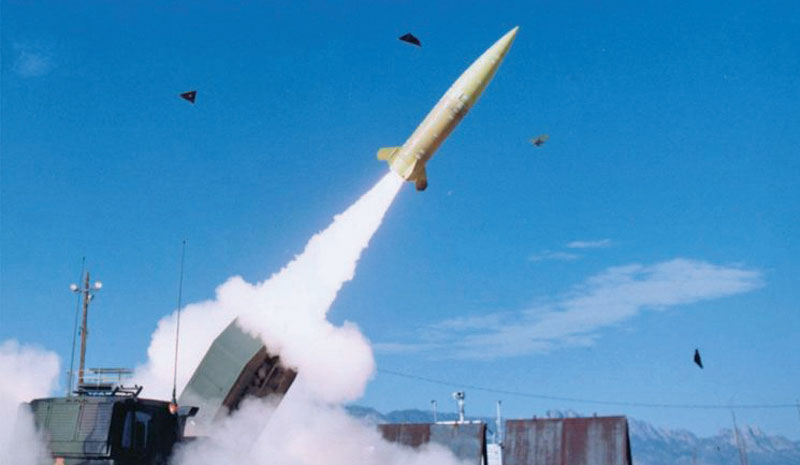
China
A number of studies have shown that China has developed capabilities to strike the US and its allies with space-based weapons, laser weapons, nuclear arsenal and electromagnetic rail guns and hypersonic missiles.
A 2021 study by Lowy Institute suggested that China can strike Australia from its bases using the long-range bombers and missiles. China has developed formidable military capabilities for itself. Last year in October, according to US intelligence, China tested a nuclear-capable hypersonic missile in August that circled the globe before speeding towards its target, demonstrating an advanced space capability that caught US intelligence by surprise. This test missed the target by 32 kms.
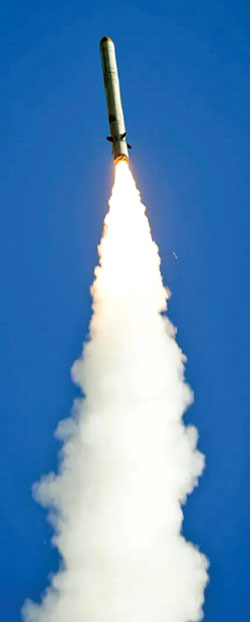
But given that it was an initial test, Pentagon officials called the test “close enough.” The Financial Times, which brought out the first report regarding the matter, stated that the Chinese military launched a rocket that carried a hypersonic glide vehicle which flew through low-orbit space before cruising down towards its target. The Guardian reported that the test is believed to have also included the release of a separate missile that rocketed away, falling harmlessly into the South China Sea.
Neither the US nor Russia has demonstrated this ability. Glide vehicles are launched into space on a rocket but orbit the earth under their own momentum. They are slower than ballistic missiles, flying five times the speed of sound. The difference is that the shape of the vehicle allows it to manoeuvre toward a target, away from the defences. This makes it harder to track. China is focusing on its nuclear capability. Satellite data revealed China’s construction of new nuclear missile silos in Gansu and Xinjiang in western China. The country is known to have maintained only about 20 silo-based intercontinental ballistic missiles (ICBMs), the Carnegie Endowment for International Peace stated. But satellite imagery showed that the country is likely constructing more than 200 new missile silos.
In 2019, China unveiled a hypersonic medium-range missile, the DF-17, which can travel around 2,000 kms and carry nuclear warheads. In June 2022, China tested a land-based missile-interception system that “achieved its expected purpose,” as per China’s defence ministry. This goes to show how China has been ramping up research into all sorts of missiles, those that can destroy satellites in space to advanced nuclear-tipped missiles. According to China’s state media, the country has been conducting anti-missile system tests since 2010. While on the one hand, China has been building formidable missile capabilities, on the other hand it has also been conscious of building missile defence systems that will safeguard the country against incoming missiles.
In 2018, China announced that it had successfully tested its first cutting-edge hypersonic aircraft that can carry nuclear warheads and penetrate any current generation anti-missile defence systems. The Xingkong-2 or Starry Sky-2, was launched in a target range located in Northwest China, the state-run China Academy of Aerospace Aerodynamics (CAAA) said in a statement. Launched in a rocket, China’s waverider was released in the air after about 10 minutes. It flew independently, made large-angle turning manoeuvre and landed in the targeted area as planned, the statement said. The flight vehicle reached 30 kms in altitude at Mach 5.5-6. The hypersonic aircraft was designed by the CAAA in collaboration with the China Aerospace Science and Technology Corporation. Waverider is a flight vehicle that flies in the atmosphere and uses shockwaves generated by its own hypersonic flight with the air to glide at high speed, Song Zhongping, a military expert told the state-run Global Times.
In May this year, China tested a new air-breathing engine during a simulated flight test achieving hypersonic speed. Chinese scientists have found a breakthrough in creating a hypersonic missile that will use hydrocarbons as fuel and employ a rotating detonation engine. This new engine will help power a plane or a missile up to five times the speed of sound or even faster.
Further, China is trying to create a hypersonic weapon that can hit a moving target while itself moving at five times the speed of sound. The South China Morning Post stated that the group of scientists developing this have been given a deadline of 2025 to provide technology for next-generation hypersonic missiles.
Early this year, the People’s Liberation Army Navy (PLAN) released the first video footage of a Chinese warship, the Type 055 cruiser, firing a YJ-21 hypersonic anti-ship ballistic missile. Anti-ship missiles act as China’s anti-access/area-denial (A2/AD) capabilities.
China has an important asset in the form of its Rocket Force, known as The People’s Liberation Army Rocket Force (PLARF), which is responsible for organising, manning, training, and equipping China’s strategic land-based nuclear and conventional missile forces as well as their supporting elements and bases. The PLARF has been rapidly expanding and modernising, as per the country’s evolving strategy regarding deterrence.
India
The late Chief of Defence Staff Gen. Bipin Rawat (retd) had in September 2021 said India may raise a rocket force of its own, which could potentially control and maintain the country’s missiles. While this was a welcome announcement, in a way it was looking at the stark capability gaps between India and China. The PLARF is believed to have the ability to strike against critical Indian military and civilian targets. Hence, while a rocket force is the need of the hour, no progress has been made on such an exclusive force. But tests of different missiles are regularly undertaken.
Last year, air-launched variants of the Brahmos missile, extended range Pinaka rockets, a new vertically-launched short-range surface to air missile and the Agni Prime ballistic missile were tested by the DRDO. The DRDO and the IAF also test-fired the indigenously designed and developed Standoff Anti-tank (SANT) missile from the Pokhran ranges. The missile has a range of over 10 kms. The DRDO also tested a long-range bomb and smart airfield weapons for the IAF. In October 2022, the DRDO test-fired the Agni Prime new generation ballistic missile. It is the latest and sixth variant of the Agni series missiles. Agni Prime is a new generation advanced variant of the Agni-class of missiles with range capability of 1,000-2,000 kms. Agni-V, with a range of 5000 kms, which uses a three-stage solid fuelled engine, is India’s contender for the intercontinental ballistic missile (ICBM). It was tested last year in October. Prithvi, a short-range surface-to-surface missile, has a range of 350 kms.
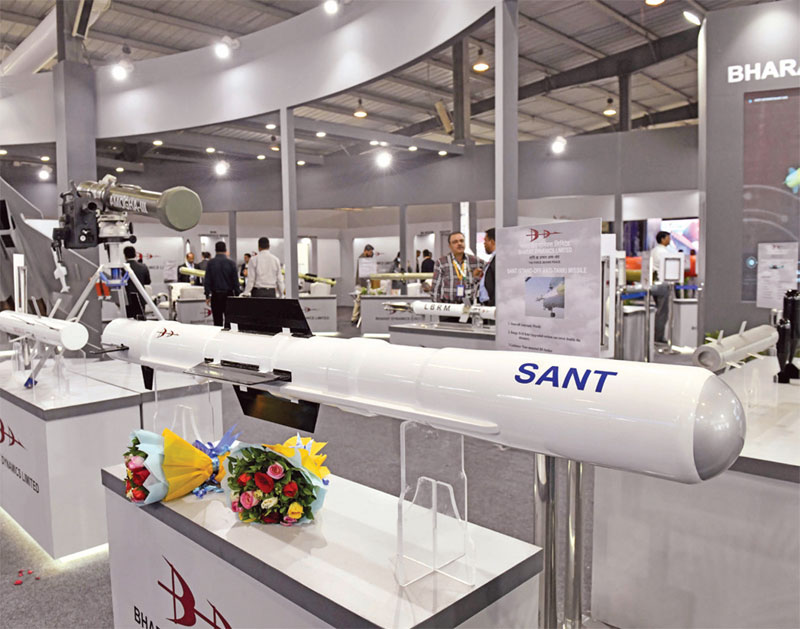
Last year in August 2021, India test-fired the 1000-km range Nirbhay cruise missile from the Chandipur testing facility. The subsonic cruise missile was fired tested for 100 km in flight. The firing was a partial success. It carries a convention warhead of 300 kgs weight and can hit targets up to 1500 kms. The missile is capable of flying between 50 metres and four km from the ground.
The Indian Army in May 2022 decided to acquire two Akash Prime missile regiments. Capable of simultaneously engaging multiple targets in group mode or autonomous mode, the Akash missile system has a built-in Electronic Counter-Counter Measures (ECCM) features and has been configured for a mobile platform. The full system comprises a launcher, a set of missiles, a control centre, a built-in mission guidance system, a C4I (command, control communication and intelligence) centre and supporting ground equipment in addition to its radar, which has been christened Rajendra. It has an operational range of about 30 km and flight altitude of around 18 km.
The Nag anti-tank guided missile has already been inducted into the services. It has a range of about 20 kms. The Medium Range Surface to Air Missile systems was given to the IAF’s 2204 Squadron in September 2022, The Indian Express reported. According to the report the air-to-ground Udram, a New Generation Anti-Radiation Missile (NGRAM), has cleared initial tests and “some more tests will be conducted soon.” It has a maximum range of around 200 kms.
The BrahMos in use with the forces has a 300-500 km range and is a short-range, ramjet-powered, single warhead, supersonic anti-ship or land attack cruise missile. In May this year, India successfully tested an extended-range Brahmos missile with a 450-km range from a Sukhoi fighter.
The DRDO is developing a carrier vehicle for hypersonic and long-range cruise missiles. It successfully tested a Hypersonic Technology Demonstrated Vehicle (HSTDV), using the indigenously developed scramjet propulsion system and demonstrating its hypersonic air-breathing scramjet technology.
While India is one of the top countries in manufacturing missiles, it still has a long way to go when compared with China, Russia and the US. The ranges of missiles India has will need to be enhanced to strike targets located afar. For this, technologies such as seekers play a very important role. Being a coveted technology, the seekers are not easily available. While the DRDO is developing this technology, it is a slow process.
At a time when the nature of warfare has taken a flight into the future and is heavily guided by artificial intelligence, the use of standoff weapons for countries like India, who are yet to build a state-of-the-art AI infrastructure, remains important.

